Real-World Asset (RWA) tokenization
Discover how Real-world Asset (RWA) Tokenization transforms traditional investments by converting tangible assets into digital tokens, enabling enhanced liquidity, transparency, and access to global markets.

In recent years, blockchain technology has expanded far beyond cryptocurrencies, opening doors to innovative applications that bridge the gap between traditional finance and decentralized systems. One of the most transformative trends leading this evolution is Real-World Asset (RWA) tokenization, also referred to as asset tokenization.
At its core, real-world asset tokenization is the process of converting tangible and intangible assets, such as real estate, equities, bonds, commodities, or even fine art into digital assets that exist on a blockchain. These tokenized real-world assets not only make investments more accessible to a wider range of investors but also enhance liquidity, transparency, and efficiency in markets that were once considered illiquid or complex.
From fractional ownership of skyscrapers to blockchain-based bonds, tokenized asset markets are reshaping how people perceive and invest in real-world value. As institutions, governments, and individuals increasingly explore this space, the tokenization of assets could redefine global finance and unlock trillions of dollars in new opportunities.
What Is RWA Tokenization?
RWA tokenization, also known as real-world asset tokenization or the tokenization of real-world assets, refers to the process of converting off-chain assets into digital tokens on a blockchain or distributed ledger. This innovative approach bridges traditional asset classes—such as real estate, commodities, art, or fine wine—with the digital economy, enabling easier transfer, fractional ownership, and increased liquidity. By leveraging asset tokenization, investors can access tokenized real-world assets, which benefits from a clear regulatory framework that ensures compliance and security in the marketplace.
Understanding the Components:
- Real-World Assets (RWA): These are tangible or intangible assets existing outside the digital realm, including properties, precious metals, artwork, private equity, or even intellectual property rights.
- Tokenization: The process of creating a digital representation (tokens) of an asset on a blockchain. Each token typically represents a fractional ownership or claim to the underlying asset.
How RWA Tokenization Works:
- Asset Identification & Valuation: The physical or intangible asset is appraised and legally prepared for transfer or ownership rights are established.
- Legal Structuring: Legal frameworks ensure that ownership rights are clear and enforceable, often involving legal contracts or special purpose vehicles (SPVs).
- Token Creation: Digital tokens are issued on a blockchain platform, each representing a share or claim to the asset.
- Custody & Security: The actual asset is stored securely, while the tokens serve as a digital claim or ownership stake.
- Trading & Liquidity: These tokens can then be traded on secondary markets, allowing investors to buy, sell, or transfer fractional interests easily.
In summary, RWA tokenization is transforming how traditional assets are owned, transferred, and invested in by leveraging blockchain technology. It unlocks new liquidity pools, democratizes access to high-value assets, and paves the way for a more efficient, transparent, and inclusive financial ecosystem. However, it also necessitates careful legal, technological, and operational considerations to realize its full potential.
Why Is RWA Tokenization Important?
RWA (Real-World Asset) tokenization refers to the process of converting tangible and intangible real-world assets—such as real estate, commodities, art, or financial instruments—into digital tokens that exist on a blockchain or distributed ledger. This innovation is transforming traditional asset management and finance by bridging the gap between physical assets and digital finance. The importance of RWA tokenization can be understood through several key aspects:
- Enhanced Liquidity
Traditional assets like real estate or fine art are often illiquid, meaning they cannot be quickly bought or sold without significant price concessions. Tokenization subdivides these assets into smaller, tradable units, enabling fractional ownership. This increases liquidity by allowing more investors to access and trade portions of high-value assets, facilitating faster and more efficient transactions.
2. Broader Accessibility
Historically, investing in certain assets required substantial capital and access to exclusive markets. RWA tokenization democratizes investment opportunities by lowering entry barriers. Investors worldwide can participate in markets previously limited to institutional or wealthy investors, fostering financial inclusion.
3. Improved Transparency and Security
Blockchain technology underpinning RWA tokens provides a transparent, immutable ledger of ownership and transaction history. This reduces fraud, enhances trust, and simplifies due diligence. Smart contracts automate processes like dividend distribution or transfer of ownership, increasing operational efficiency and reducing the reliance on intermediaries.
4. Cost Efficiency and Reduced Intermediaries
Traditional asset transactions often involve multiple intermediaries—lawyers, brokers, escrow agents—leading to high fees and delays. RWA tokenization leverages blockchain to streamline processes, cut operational costs, and accelerate settlement times, making transactions more efficient and cost-effective.
5. Portfolio Diversification
Tokenized assets enable investors to diversify portfolios easily across different asset classes, geographies, and sectors without the logistical complexities associated with physical assets. This diversification can improve risk management and investment returns.
6. Enhanced Global Market Access
With digital tokens, assets can be traded across borders seamlessly, opening up international markets. Investors can access a wider range of assets and opportunities, while asset owners can attract a global pool of investors.
7. Innovation in Asset Management
RWA tokenization paves the way for innovative financial products, such as tokenized funds, derivatives, or automated investment strategies. It also facilitates real-time valuation and dynamic pricing, enabling more sophisticated financial engineering.
8. Regulatory and Compliance Benefits
Blockchain’s transparency and traceability can aid compliance with regulatory requirements. Tokenization platforms can embed compliance protocols directly into smart contracts, ensuring adherence to legal standards and reducing regulatory risks.
In summary, RWA tokenization is a transformative development that enhances liquidity, accessibility, transparency, and efficiency in the management and trading of real-world assets. Its adoption can revolutionize traditional financial markets, making them more inclusive, innovative, and resilient.
Key Components of RWA (Real-World Asset) Tokenization
RWA tokenization involves converting ownership rights of tangible or intangible real-world assets into digital tokens on a blockchain or distributed ledger technology (DLT). This process enhances liquidity, transparency, and accessibility for traditional assets such as real estate, commodities, art, or infrastructure. The key components of RWA tokenization are as follows:
Asset Identification and Selection
- Asset Type & Nature: Clear identification of the asset class (e.g., real estate, gold, intellectual property).
- Valuation & Appraisal: Accurate valuation performed by qualified professionals to establish the asset’s worth, ensuring fair token representation.
- Legal Ownership & Title: Verification of legal ownership rights, titles, and any encumbrances or liens associated with the asset.
- Legal & Regulatory Framework
- Compliance & Jurisdiction: Ensuring the tokenization process adheres to local and international laws, securities regulations, and AML/KYC requirements.
- Legal Structuring: Establishing legal entities or special purpose vehicles (SPVs) if necessary, to facilitate compliant transfer and ownership.
- Token Rights & Restrictions: Defining the rights conferred by tokens, such as dividends, voting, or profit-sharing, and any transfer restrictions.
- Token Design & Standardization
- Token Type: Deciding between security tokens, utility tokens, or hybrid models, based on asset characteristics and regulation.
- Standards & Protocols: Utilizing established standards like ERC-20, ERC-721, or ERC-1155 to ensure interoperability, liquidity, and ease of transfer.
- Fractionalization: Dividing the asset into multiple tokens to enable fractional ownership, increasing accessibility and liquidity.
- Technology Infrastructure
- Blockchain Platform: Selecting a suitable blockchain network (Ethereum, Binance Smart Chain, etc.) that offers scalability, security, and smart contract capabilities.
- Smart Contracts: Developing secure, transparent, and programmable contracts that manage token issuance, transfers, and compliance rules.
- Custody & Security: Implementing secure custody solutions for the underlying assets and tokens, including multi-signature wallets and insurance.
- Asset Custody & Management
- Physical Asset Custody: Ensuring proper storage, maintenance, and insurance for physical assets.
- Digital Asset Management: Continuous tracking of token ownership, transfer records, and compliance status via blockchain.
- Token Offering & Distribution
- Initial Offering: Conducting offerings such as Security Token Offerings (STOs) or private placements to distribute tokens.
- Secondary Market Trading: Facilitating liquidity through exchanges or over-the-counter (OTC) deals, enabling investors to buy or sell tokens.
- Audit, Compliance & Transparency
- Regular Audits: Conducting periodic audits of the underlying assets, token supply, and transaction history.
- Transparency & Reporting: Providing stakeholders with accessible reports on asset performance, valuation updates, and regulatory compliance.
- Stakeholder & Governance Framework
- Participants: Defining roles such as asset originators, investors, custodians, and regulators.
- Governance Mechanisms: Establishing rules for decision-making, voting rights, and dispute resolution within the tokenized ecosystem.
In summary, the successful implementation of RWA tokenization hinges on meticulously integrating asset identification, legal compliance, technological robustness, effective custody, and transparent governance. These components collectively enable seamless, compliant, and liquid markets for traditionally illiquid assets, transforming how assets are owned, transferred, and invested in the digital economy.
Key Trends Shaping the Future
Real-World Asset (RWA) tokenization is emerging as a transformative force within the blockchain and traditional finance landscapes. This innovative approach promises to unlock liquidity, enhance transparency, and democratize access to high-value assets.
- Enhanced Liquidity and Market Efficiency:
Tokenized assets can be traded 24/7 on secondary markets, significantly reducing settlement times and transaction costs. This liquidity boost will enable more dynamic and efficient markets for traditionally illiquid assets. - Regulatory Evolution and Standardization:
As governments and regulators develop clearer frameworks for security tokens and digital asset custody, RWA tokenization will become more mainstream. Standardization efforts, such as common protocols and interoperability standards, will facilitate cross-border trading and asset management. - Broader Asset Classes and Use Cases:
Beyond real estate and commodities, future RWA tokenization may encompass intellectual property rights, supply chain assets, and even government bonds. This diversification will expand the scope of tokenized assets, attracting a wider array of investors. - Integration with Decentralized Finance (DeFi):
RWA tokens will increasingly integrate with DeFi protocols, enabling borrowing, lending, and derivatives based on real-world assets. This fusion will heighten capital efficiency and unlock new financial products. - Technological Advancements:
Innovations in blockchain scalability, security, and identity verification (KYC/AML) will underpin the secure and compliant management of RWA tokens. Privacy-preserving technologies will also emerge to protect sensitive asset information. - Sustainability and ESG Considerations:
Tokenization can facilitate investment in sustainable projects and promote transparency regarding environmental, social, and governance factors, aligning financial innovation with sustainability goals.
The future of RWA tokenization is poised to revolutionize asset management and investment paradigms. As technological, regulatory, and market ecosystems mature, RWA tokens will play a pivotal role in creating more inclusive, efficient, and liquid markets for a wide array of real-world assets, ultimately transforming the landscape of global finance.
Final Thoughts
RWA tokenization transforms traditional assets into digital tokens, boosting liquidity, transparency, and accessibility. While it offers democratized investment and streamlined management, challenges like regulation, security, and compliance remain. As the sector matures, it promises to unlock asset value and promote inclusive finance, requiring careful adoption by stakeholders.
Date
1 minute agoShare on
Related Blogs

Real-World Asset (RWA) tokenization
1 minute ago

Gamified DeFi: How Play-to-Earn Models Are Reshaping User Engagement
5 days ago

How Blockchain Is Disrupting Traditional Banking Systems
16 days ago

AI-Powered Smart Contract Wallets The Future of User-Friendly Blockchain UX
21 days ago







